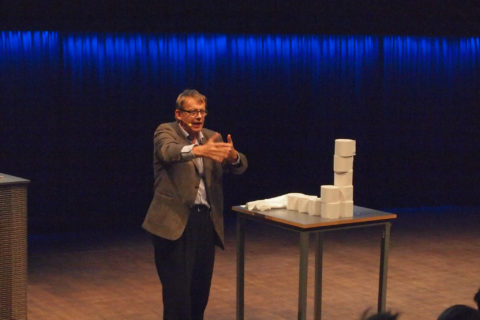by John Presutti
As we prepare for the 2017 MENAP forum, I was asked to write an article about the region that would pique interest, particularly from a researcher’s perspective. I blithely accepted this task; after all, I have been involved in conducting research across MENAP for nearly 25 years – I have seen a lot. I have done a lot. The task, however, is formidable. Collapsing the region into a tidy five letter acronym belies its scale, complexity, diversity, and historical richness.
The MENAP region unfurls into more than 20 countries, a population of more than 600 Million, a culture and history that boasts accomplishments such as the cradle of civilization, the birth of Abrahamic religions, the invention of Algebra, countless musical instruments, and yes, believe it or not, soap. So, in retrospect, what I have seen and done in the past quarter century is barely the proverbial tip of the sand dune. MENAP is a region filled with constant surprise, cultural diversity, political upheaval, and economic complexity. Attempting an exhaustive discussion is quixotic. As such, I would like share with you 5 observations I believe important for anyone conducting research within the region.

1.Look beyond the narrative of turmoil, violence, and ultra-conservatism perpetuated by mainstream media
Mainstream media coverage of the MENAP region is littered with words such as “violence”, “terror”, “radical Islam”, “extremism”, and countless other fear invoking adjectives that create a perception of mayhem and instability. Looking beyond this narrative reveals a vibrant region with a bourgeoning middle-class, with well-developed financial and retail infrastructure, with well-regulated legal and commercial environments providing protection for brand owners, businesses, and consumers alike. A UN study commissioned by the Economic and Social Commission for Western Asia, estimates the size of the Arab middle class at between 32%-43% of the population for less developed markets and between 55%-60% for more developed markets. In Pakistan, conservative estimates from the Pakistan Institute of Development Economics estimate the size of the middle-class at around 19% of the population. Iran, long considered the seat of anti-western dogma and religious conservatism and until recently isolated by global economic sanctions is now capturing the attention of global brands from automotive to consumer electronics to luxury. While reliable current statistics on the size of the Iranian middle-class are not yet available various estimates place the size to be between 40%-50% of the population, nearly 40 million consumers.
The implication of these staggering statistics is a middle-class market of nearly 200 million consumers with discretionary spending power available for non-essential goods and services. In other words, there is great opportunity for goods and service providers to address growing consumer demand within the MENAP region.
2.The countries of MENAP are highly diverse and cannot be treated similarly.
I am often asked by international clients concerned with budget and time constraints which countries should be included within a regional research program. However, the countries within MENAP, while predominantly Muslim are vastly different from each other and reflect unique cultural and societal journeys. This translates into differences in language to societal values & attitudes, collectively impacting a variety of topics from career and leisure to relationships and aspirations to savings and discretionary spending.
Within the countries themselves, there are stark regional differences. The Western region of Saudi Arabia is considered “culturally” different from the Central & Eastern region and in Pakistan the same is said of Lahore and Karachi, one being predominantly Punjabi and the other Sindhi. Even in the traditional Arab countries of the Arabian Peninsula, North Africa, and Levant, the Arabic language exhibits dialectic and idiomatic idiosyncrasies that can pose a challenge when developing research materials. The country of research will determine whether the Arabic used in Levantine, Khaleeji, Hijazi, Maghreb, or Egyptian. In Pakistan, while the official languages are Urdu and English, there are widely spoken provincial languages of Punjabi, Sindhi, Pashtu, and Balochi.
While a singular bellwether country does not exist for understanding the MENAP region, we do tend to build research programs based on individual market priorities. Typical MENAP research programs will include Saudi Arabia, UAE, Kuwait, Egypt, Morocco, Turkey, and Pakistan. Having said this, however, there has been increasing interest in emerging markets such as Algeria, Iraq including the Kurdistan Regional Government.
3.The economic outlook across the region is varied
While unmistakably tapping into the spending power of MENAP’s middle-class represents a great opportunity, the current economic climate is inconsistent across the region. GCC markets have been horribly affected by the drop of oil prices from a high of over $100 per barrel to around $50 per barrel today and as such were forced to adapt to the new harsh economic reality. These countries were accustomed to large fiscal budget surpluses driven by oil industry revenues but in the face of deficits have begun to implement harsh austerity programs to reduce budget deficits. Saudi Arabia, the largest and perhaps most influential of the GCC economies ended 2016 with an estimated budget deficit of $87 billion. Across the GCC governments have either implemented or are planning austerity measures including the elimination of consumer subsidies on fuel, water, and electricity, the introduction of 5% VAT, reduction and scaling back of government contracts, and potentially the introduction of personal and corporate income tax. In Egypt, the economic outlook is still dire but improving as it continues to grapple with the effects of fiscal reform implemented by the government to deal with the uncertainty and chaos following the Arab Spring. Egypt’s economy has suffered numerous shocks including soaring inflation, currency shortages, and a failing tourism sector. The government economic reform program has included initiatives such as the introduction of VAT, a free-floating currency, and reduction in consumer fuel subsidies.
The economic blowback from government austerity measures will mean both lower GDP growth and lower consumer discretionary spending in these countries. From a consumer perspective, this means greater emphasis on value and affordability as consumers seek ways to stretch their decreasing disposable income.
Despite the somewhat glum economic outlook for some of the countries, there are bright spots across the region. Iran is expected to enjoy economic growth as it comes in from the cold of years of economic sanctions. The forecast from the Iranian government as well as the financial community is that Iran will experience a surge in oil and non-oil exports as well as in foreign direct investment. Pakistan is also looking at a rosy economic picture as South Asia’s second largest economy is eyeing robust GDP growth driven by lower oil prices and heavy foreign direct investment in infrastructure, particularly from China. The economic growth of Pakistan and Iran combined represent expanding prosperity for a market of 260 million consumers.
4.Digital disruption has taken hold across the region
Any brand thinking about developing their strategies to connect and engage with consumers in the MENAP region must be willing to embrace digital technology. MENAP consumers are creating digitally enabled lives. With smart phone penetration rapidly moving towards universal penetration, MENAP consumers are using their mobiles for just about everything imaginable. According to the recently released annual report form We Are Social and Hootsuite, Digital in 2017 Global Overview, in the Middle East, there are 312 million mobile subscriptions, 93 million active social media users of which 90% are active mobile social media users. Furthermore, the Internet of Things (IoT) within the region is experiencing rapid growth with organizational spending expected to increase at a compound annual growth rate of over 21%, reaching $14.3 Billion by 2020. eCommerce and mCommerce are gaining rapid momentum as consumer acceptance to pay for goods and services online grows. According to online payment service provider, Payfort, consumer acceptance of online payment within the Middle East stands at more than 50% with online purchases expected reach $69 Billion by 2020. Furthermore, according to Criteo, a global provider of digital performance advertising, more than one third of GCC online purchases was made via mobile. Businesses that successfully leverage the deepening relationship between MENAP consumers and digital technology to meaningfully connect and engage their target audiences will surely reap huge rewards.
5.MENAP research is going digital
Rapid consumer adoption of digital technology has created exciting possibilities for engaging and researching consumers across MENAP. Over the past 3 years, digital technology has put some spring back into the step of a region where the industry has plodded along slowly unable to keep pace with changes taking place in more developed research markets.
Until recently, most face-to-face surveys were conducted using paper and pencil. Today, web enabled geotagged CAPI is increasingly the norm. Online access panel providers were few and provided limited geographic coverage. Today, there has been a proliferation of panel providers and MENAP coverage is near universal. Furthermore, mobile market research triggered through SMS invitations has experienced meteoric growth offering clients fast, cheap, and high quality data collection. Permanent private online brand communities are also beginning to gain acceptance amongst clients who appreciate immediate access to a large base of customers that can be engaged in a candid dialog about brand and product experiences. Digital technology within the quantitative research space is spelling an end to the dreaded face-to-face survey which has long been criticized for inconsistent data quality.
Digital technology is also influencing how qualitative research is conducted within the region. VVOIP platforms such as Skype are being used reach and interview respondents in less stable places such as Baghdad or Gaza. Online focus groups whether organized as a live chat or a bulletin board discussion are also gaining acceptance as clients appreciate their speed, convenience, and cost effectiveness. Within the ethnography space such as shop-alongs and in-home visits, mobile ethnography platforms are making their debut with such features as push to talk audio and live stream audio, allowing researchers and observers to virtually accompany respondents in a less intrusive manner, while saving considerably on cost and time.
Finally, as researchers find their sea legs in the ocean of digital technology, they are becoming more open to the avant-garde of technology driven methods including neuromarketing sciences and big data analytics. Neuromarketing research projects utilizing eye-tracking, EEG, and facial coding are becoming more commonplace. Clients are also actively contemplating how to leverage the Big Kahuna of big data, particularly as they gain exposure to the power of social media listening. While this area of research is still early days for MENAP, the conversation is becoming louder amongst researchers and clients, perhaps a harbinger of things to come. As the cost of neuromarketing and big data tools drops, this area will experience rapid growth as researchers seek out methods of increasing the predictive power of data.
In closing, my parting thought is that the MENAP region is huge, diverse, and full of surprise. Conducting, research within the region requires careful planning, a hands-on approach, and a great deal of cultural sensitivity and patience. While the region is currently experiencing economic and political difficulties, there is a massive thriving middle-class that should not be ignored. Finally, the rapid adoption of digital technology has provided researchers unprecedented access to consumers willing to engage them in a meaningful always connected always on dialog.
Join us at our upcoming MENAP forum for more regional insights and innovation!
John Presutti is CEO market-i research and consultancy and ESOMAR UAE representative



